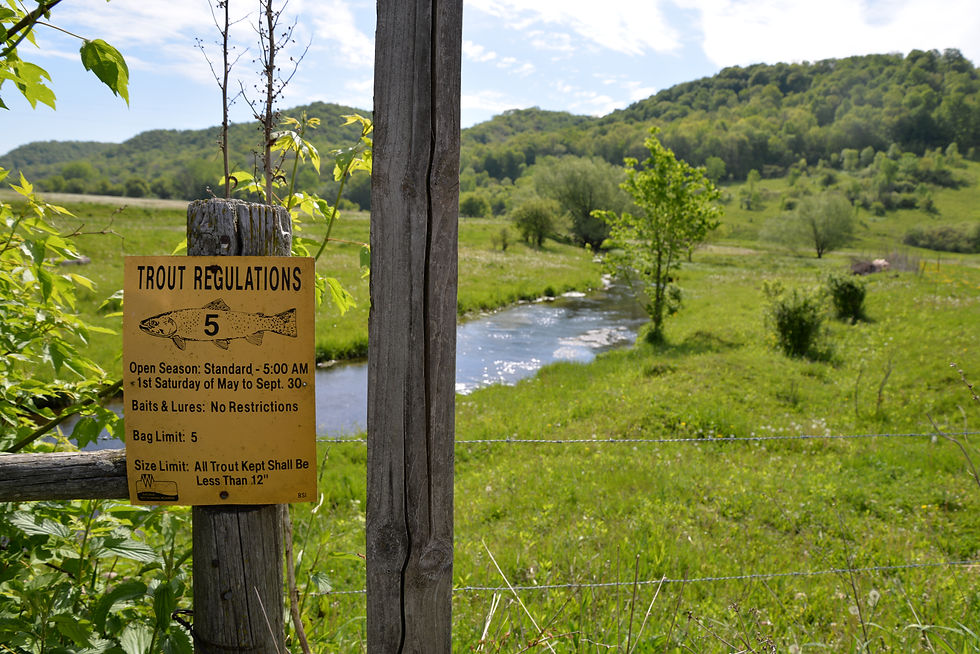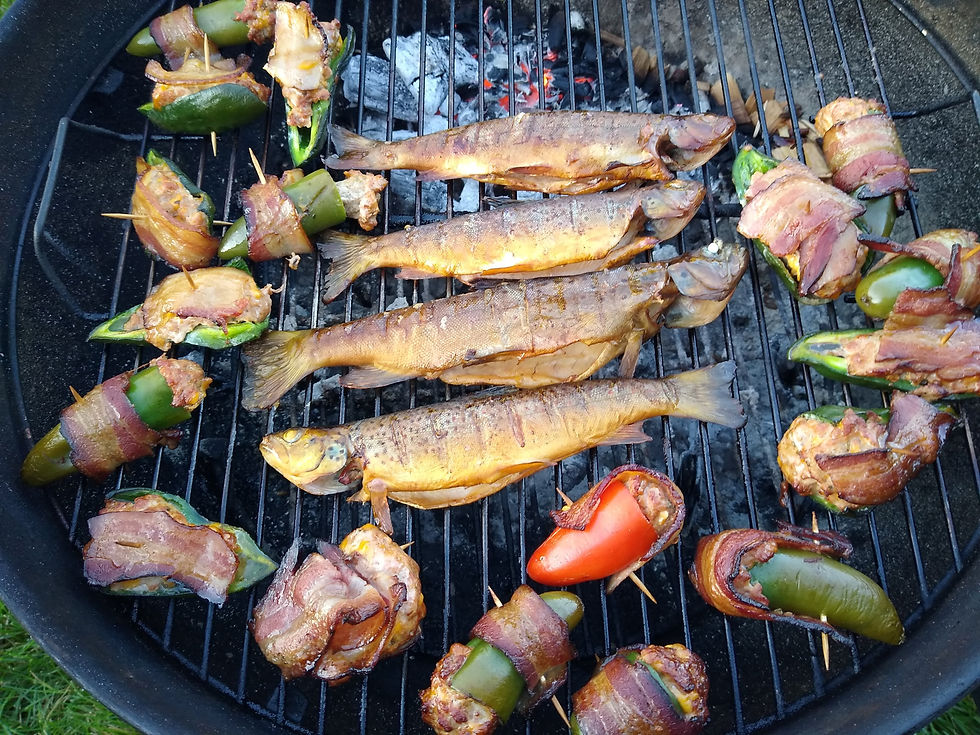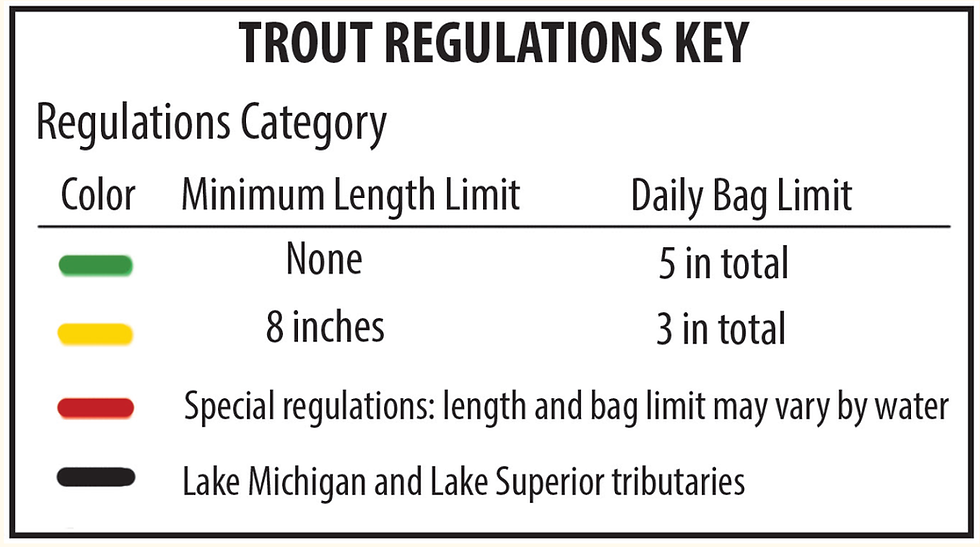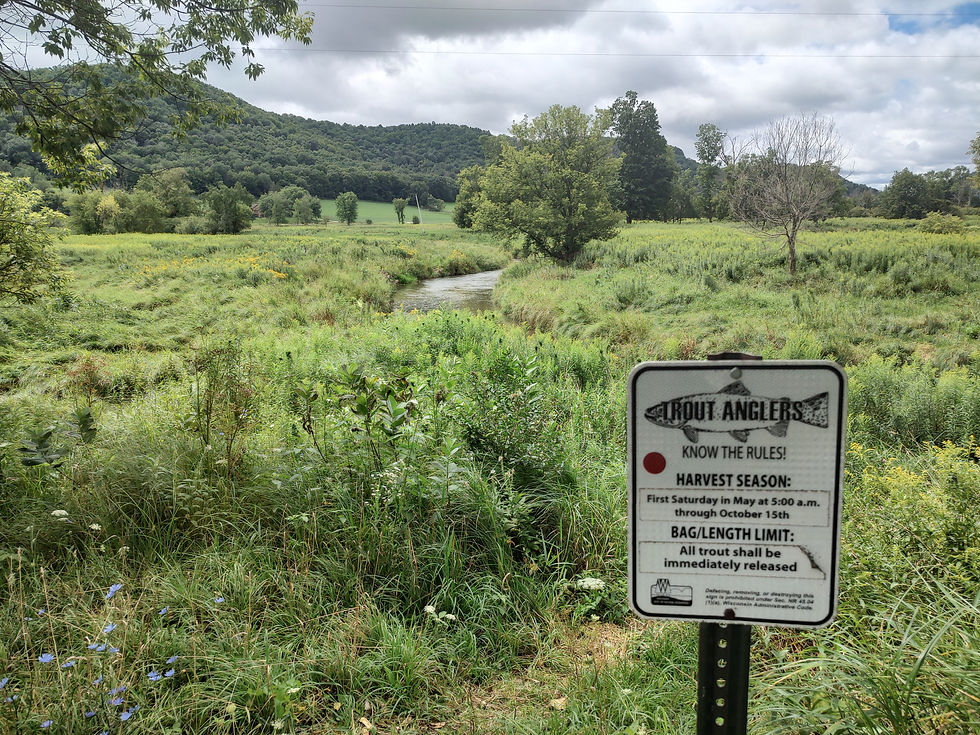Probably one of the most discussed and maybe most poorly understood fisheries management topics is that of regulations. We ALL have opinions on them, it seems. Myself included. Many people think that regulations do many things that they do not do. First, they are at least as much social as they are biological - that alone limits their ability to manage fish populations and size structure. However the social aspects are just as important of the biological goals of regulations. There are all kinds of examples of regulations not working well - from the utter collapse of fisheries to more minor declines in fisheries to overpopulated fisheries where more harvest could improve the fishery. Regulations are nearly always going to be less than perfect - they are a blunt instrument but an important aspect of fisheries management nonetheless.

Regulations are - or at least should be - more than just about fish populations, although that is certainly the measuring stick for most anglers. Aside from managing populations, regulations are - or at least should be - designed to influence size structure of fish populations as well as their many social effects. They set expectations for anglers, they highlight special resources, they provide different opportunities for different anglers. Regulations are much more than just a biological tool.

Regulations are ALWAYS going to be imperfect. There is absolutely no way around that, they are, after all, as much social as they are biological and there is no animal that is more difficult to manage than Homo sapiens. Watching this play out online is a shit show - though that explains about 75% of the internet, I suppose. I see guys - it is always guys - complaining about how there are no large trout and then posting stringers of 14 to 16 inch trout as if they are an inexhaustible resource and their harvest has no affect on the lack of larger trout. That is however little different from the angler that proudly releases every fish and does not understand that can also be part of the problem. I will be the first to tell you, I am part of that problem. I know there are streams where I should keep more fish but I do not. That is for any number of reasons - trout are low on my list of fish I like to eat, I only keep them when I can get them on ice quickly which requires advanced planning - not something I excel at when trout fishing, and any number of other reasons.

There was what I thought to be a rather mediocre and poorly researched book - Lost in the Driftless: Trout Fishing on the Cultural Divide - on the topic of fishing regulations in the Driftless and their social aspects. The book had so much potential but it, quite frankly, fell short of the mark. There are some very interesting social and biological questions in the Driftless and elsewhere about trout fishing and the responsible harvest of trout. We - in many Driftless streams - have too many trout, an interesting problem to have, to be sure. But at the same time, the size structure is sub-optimal and we have too many small fish. But in a historical perspective, it has gotten better. In the mid-1990's, "Timber fish" were 7 to 9 inches and really skinny. You do not see fishes in poor condition like you once did. In fisheries management lingo, they had a poor condition index, a commonly used way to assess the "health" of a fish population based on the length-weight relationship of fishes. Individual fish or populations with a condition score of 100 means a fish is of a good, average weight for its length, conditions below 100 are "skinny" fish, and conditions above 100 means that the fish are heavy for their length - generally a desirable thing.

A bit of history of trout management in Wisconsin is necessary to understand where we are today. Going back far enough - the 1960s and before, many of our streams were in rough shape. And prior to the Clean Water Act, water quality was often much poorer than it is today. Couple degraded habitats and often poor water quality and the state was stocking trout, a lot of trout. This lasted until about the mid-1990s when wild trout management took over. Download the stocking database from the Wisconsin DNR (WDNR) website and you will see that even streams that today have 10 fish bag limits with no size limit - where the WDNR is all but begging people to keep fish - were heavily stocked as recently as the mid- to late-1990's. Improved habitat and water quality along with discontinuing most stocking led to the self-sustaining, wild trout fisheries we see today.
Fisheries managers have several tools at their disposal - seven (7) according to Arostegui et al. (2021): harvest size restrictions, harvest quantity restrictions ("bag limits"), spatial management, temporal restrictions, accessibility restrictions, rights-based management, and gear restrictions. On the biological side, most fisheries management is accomplished through managing mortality due to fishing - both harvest and catch and release mortality. Being that fisheries management is at least as much about social aspects as it is the biological, much of regulations are about trying to keep people happy, no easy task to be sure. Every angler that has ever held a rod in their hand knows more than the Damn Near Russians (DNR) and their biologists that obviously do not know as much as the grump sitting on a bar stool despite the biologists' years of studies and work experience, their data, and all that...but I digress.

As Abraham Lincoln may or may not have said (an idea first known from John Lydgate),
"You can please some of the people some of the time, all of the people some of the time, some of the people all of the time, but you can never please all of the people all of the time."
That, of course, is at the heart of the issue of human dimensions of fish and wildlife management. Without retreading too much of the same territory as some previous posts (What is Fisheries Management?, "Average" Angler, Human Dimensions, stages of anglers, fishing regulation complexity), people are damn near impossible to "manage". Anglers all have their own reasons for fishing. For some it is mostly about harvest and their bought their license and that gives them the right to keep whatever the law says is legal. For others, it is more of a "spiritual" pursuit and catching is secondary or even further down the list of reasons that they fish. And there is every other combination of reasons between those extremes for people why people fish. So, in general, fisheries management agencies have adapted regulations to try to please everyone some of the time (or place).

This is illustrated in Wisconsin where our "stop light" regulations provide something for everyone, or at least that is the goal. Certainly this is made easier in the "trout rich" areas and more difficult in the places where trout waters are rare or non-existent.

Decisions on what regulation to give each reach or what the baseline regulation is a mix between biological and social choices. Some fisheries managers prefer the more liberal regulations (green), whereas others prefer a bit more conservative baseline regulation (yellow). Regulations are inherently less than perfect and are generally a rather coarse instrument. And in Wisconsin, they were made a bit coarser by the Wisconsin DNR having decided to limit the number of special regulations (red), requiring one baseline regulation for each county (green or yellow), and having regulations applying to stream segments (between tributaries) rather than allowing road crossing or other geographic features to serve about the boundary for a particular regulation. This was done in the name of simplicity - and I understand the desire for that - but I question if we have just traded one set of issues for another. Regulations now, sometimes, change at the county line, a much less well defined geographic location than a road crossing or junction with another stream, as they had in the past.
My "almost home waters", the Coon Creek watershed, where I spend a large portion of my angling effort is as good of an example of the "something for everyone" approach which is rooted in biological and social sciences. It is one of the state's best known, most productive, and most heavily fished watersheds. At first glance, there are a lot of special regulations waters, however many stream miles are regulated to encourage harvest. To support my grumble above, Timber Coulee is an example of how regulations were coarsened (applied to large geographic areas) in the most recent regulations overhaul. As many may remember, there was about a four mile catch and release section on Timber Coulee from the junction at Bohemian Valley Creek (labeled Coon Creek above) upstream to the Olstad Road bridge. This provided non-harvest oriented anglers a few miles of trout stream. Today, there are several times more miles of catch and release on Timber Coulee because the regulation is now applied to all of the stream upstream from the junction of Bohemian Valley. And the best support of my grumble is Bohemian Valley (Coon Creek) changing from special regulations to green at the Monroe - La Crosse and La Crosse - Vernon county lines. Bohemian Valley special regulations allows anglers to harvest ten (10) trout with no minimum size limit with a goal of increasing harvest to thin the population and hopefully allow fish to grow "fatter" and larger. Special regulations on Rullands Coulee allow the harvest of five (5) fishes under 12 inches - a regulation that hopes to allow larger fish to survive by harvesting more smaller fish to give the larger fish room to grow.

For the Coon Creek watershed, what effects regulations have had are not yet clear. However, there is some evidence that harvest has not had much effect in high productivity streams of the Driftless Area, at least not at the population-level. There simply does not appear to be enough harvest - or harvest of "the right fishes" (more later...) - to have the desired effect. Regulations like those on Rullands Coulee encourage anglers to keep smaller fish - the "right fish" to harvest to allow some fishes to grow larger - but harvest is often insufficient on highly productive waters. Protected slot regulations (can not keep fish between 10 to 14 inches and only one fish over 14" may be kept, for example), often a favorite of anglers and bar stool biologists, have often been found to effectively be a "1-over" regulation because anglers do not keep the fish below the slot limit.

Regulations are not just to regulate populations but they may also be implemented to try to regulate the size structure of a population. Many minimum size limits are generally designed to allow fishes to spawn at least once before becoming harvestable or to allow them to reach a trophy status for fishes like Muskellunge. Maximum size limits where only fish below a particular length can be kept - like that mentioned for Rullands Coulee - attempt to manage size structure by encouraging the harvest of plentiful smaller fishes and protect the rarer large fish. A 16 inch trout will never grow up to be an 18" or 20" trout if it is kept. On its face, this seems like an encouraging way to manage a fishery for larger fishes but it only works if a forage base is in place to allow for their growth and if there is enough harvest of the smaller fishes to promote the growth of larger trout. Density-dependence matters.
The something for everyone approach is really the best we have but it, like the regulations themselves, is less than perfect. The scientist in me feels the need to point out that catch and release regulations can also be useful to have a control to compare the effects of harvest regulations in other stream reaches. We can not know what the effects of harvest are if we do not have a baseline to compare those effects to. There are many different reasons that regulations are in place.
Wrapping it all up
I try to keep these post relatively short - the computer algorithm tells me that it should have been an 8 minute read at this point - and that is about enough for one post. This is a topic on which books have been written so this post is missing a lot of nuance, to be sure. Regulations are never going to please everyone. But I do not have a ton of sympathy for the argument that our trout regulations are too complex - trout regulations are certainly simpler and easier to find than are the state's warm water regulations. Don't like that Timber Coulee is catch and release? Fish elsewhere - there are many other streams that will let you harvest plenty of trout all within a very short drive.

There is certainly a lot of geographic variation. I write mostly about my home waters - highly productive Driftless spring creeks. In many other places in the state and elsewhere, the same level of harvest is likely to have a much more significant effect. And little of this post has really gotten into the effects of regulations on size structure, mostly because we just do not have great answers, yet. A post for another day...



The controls are all set into the right case flank with an upper pusher that advances the date, a central link crown for time setting link and hand winding, and a lower crown that controls the 12-hour bezel. All of these touchpoints are meant to feel as tactile and camera-like link as possible. And you know what? They really do.
The first picture in this blog shows a group of black willow trees by the streambank that were planted by the Westby Rod and Gun stream restoration crew 70 years ago. That group of black willows had protected the neighbors field from erosion for 70 years, provided leaves, seeds, and small branches for the nutrients needed by the invertebrates in the stream for 70 years, and provided this young fly fisherman a very productive brown trout experience, tossing a fly under the branches of the black willow for many years on my noon break from work on the family farm. The neighbor harvested many muskrats and an occasional mink that had a nest in the streambank by the black willows.
Note to author, no references to how biodiversity is the controlling factor on the biomass in our Wisconsin Trout Streams. Came across this article for the Milwaukee and Chicago people in DNR and TUDARE could relate to about biodiversity and biomass if they read the next to last paragraph. https://www.eurekalert.org/news-releases/463769 P.S. Another note to author, Is the algae in our streams reducing the amount of zooplankton in our streams and thus reducing the biomass in our trout streams?
I understand why you stay away from the topic of the "Food Chain of BIG Trout" and instead write about the DNR Regulations. It would be hard to write about how the DNR shocking crew used to throw the native fish, white suckers, various minnow like fish, crayfish, etc. up on the streambank to die. It would be hard to write about how the DNR and TU stream restoration crew totally eliminated the habitat for various species of frogs and toads. It would be hard to write about how TUDARE has a policy to cut back all the river trees from the streambank and replace them with "HOT" quarry rock and reed canary grass. Is this the reason that the…
I fish some in the Driftless but I spend more time in the TFZ (the Trout Free Zone) north of Highway 8. The TFZ has some spring water, but not the limestone that growns trout food. I was disappointed with the last cultural "simplification" of the regulations. I know of one small stream in the TFZ that had a small population of large wild brook trout. The fishermen were decimating the population until the DNR issued the special reg of a daily limit of one fish over, I think it was, 15 inches. In the "simplification" it went back to the basic reg of five fish of any size, and now the fish are about gone. Another stream has a…